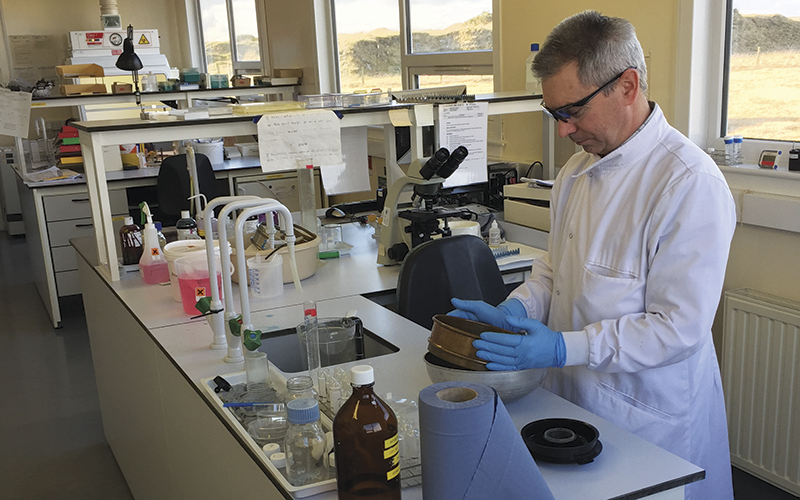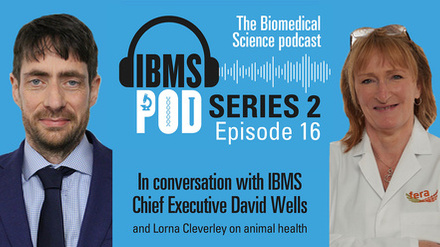My Lab: Veterinary Disease Surveillance

y laboratory is in one of the eight Veterinary Disease Surveillance Centres (DSC) operated by SAC Consulting Veterinary Services across Scotland. We belong to a division of Scotland’s Rural College, SRUC. With a view of Dunnet Head, the most northerly point on the UK mainland, and across the sea to Orkney, our microbiology lab just outside Thurso is certainly a room with a view.
Our main remit is to oversee farm animal disease surveillance and control. We also play a role in health planning and supporting eradication of diseases, such as Bovine Viral Diarrhoea.
The bulk of our workload consists of microbiology and parasitology testing on samples from farm animals.
Across our network, we carry out post-mortem examinations on around 5000 farm animals and a smaller number of companion animals, and test in the region of half a million samples a year.
The role that we carry out is similar to that of a hospital pathology laboratory, but we have more than one species to consider. This ensures that our workload is varied and interesting. For example, we have tested faeces samples from scouring reindeer, cultured samples from a post-mortem examination of a snake, and process routine vitamin and mineral checks on ovine and bovine blood.
Coming to work in veterinary microbiology is a steep learning curve, as we have to learn which organisms are the usual pathogens, not only in a range of tissues, but in a range of species. With this comes diseases with names such as Strangles, Braxy and Bumblefoot.
When reporting results, our Veterinary Investigation Officers consider factors such as whether we have identified an emerging or re-emerging disease, if a disease is notifiable, or whether there is a risk to public health or the food chain. For example, a post-mortem finding of lead poisoning as a result of cattle gaining access to a car or tractor battery is not uncommon. In such cases, we liaise with Food Standards Scotland to ensure that there is no risk to human health as a result of such an incident.
Data gathered by us is used to monitor the health and disease status of livestock in Scotland. We collaborate with the Animal and Plant Health Agency to provide national veterinary disease surveillance data for DEFRA and the Scottish Executive. Surveillance covers topics ranging from antimicrobial resistance, such as screening for livestock-associated MRSA, in conjunction with the Scottish MRSA Reference Laboratory, and collecting samples for avian influenza testing.
Our site has four permanent members of staff, and is the smallest of our DSCs. Other than myself, we have a Senior Scientist, an Assistant Technician and an Office Manager. Post-mortem examinations at our site are carried out by Veterinary Surgeons from our local practice, who have been trained to carry out the work and report the results to ISO 17025:2005 standards.
We have IBMS training laboratory approval, so our support staff can complete the portfolios for the Certificates of Achievement. Last year, our Assistant Technician was awarded the Certificate of Achievement Part 1.
Have those of you working outside the NHS considered that your lab could also apply for training laboratory approval?



